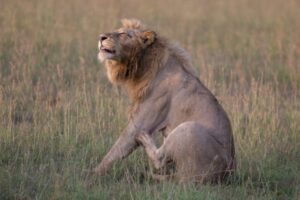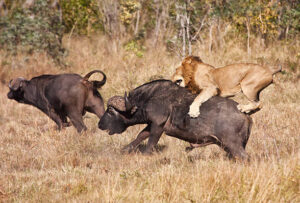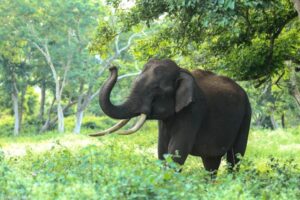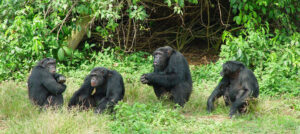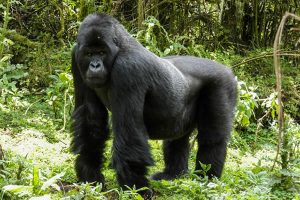TIME TO GO TO AFRICA FOR WILDEBEEST & GORILLAS IN UGANDA & RWANDA
When organizing a safari to Rwanda and Uganda to see the Great Migration in Africa (Kenya and Tanzania) and get up close with mountain gorillas, it’s important to take seasonal patterns and wildlife behavior into account. Millions of wildebeest, zebras, and other herbivores traverse the Serengeti in Tanzania and the Masai Mara in Kenya during The Great Migration, one of the most amazing natural spectacles on Earth, in quest of more lush pastures. In the meantime, trekking through verdant rainforests to witness endangered mountain gorillas in their natural habitat is a unique opportunity provided by Rwanda and Uganda. Seasonal variations have a significant impact on both experiences, so picking the proper period is crucial to guaranteeing unique wildlife encounters.
To get the most out of your Great Migration tour to Africa and gorilla trekking in Rwanda and Uganda , scheduling is essential. The ideal times for each activity are listed in this comprehensive guide:
The Great Exodus of Great Wildebeest& Gorillas in Rwanda and Uganda
Millions of wildebeest, zebras, and other herbivores travel annually through Tanzania’s Serengeti habitat and Kenya’s Masai Mara during the Great Migration. Seasonal rains and grazing conditions, along with the quest for greener pastures and water sources, are the driving forces behind this natural spectacle.
Large distances are covered during the migration path, which starts in the southern Serengeti in December or January during calving season. This attracts predators and gives carnivores enough of prey. The herds head north toward the Mara River, a vital crossing point into Kenya’s Masai Mara, as the dry season advances from June to August. One of the most spectacular sights of the migration is the crossing of a river, where crocodiles wait patiently while lions and hyenas pursue their prey.
Ideal Time to Go for great migration
Winter Season: December through March
Where: Tanzania’s Southern Serengeti
Highlights: Wildebeest give birth to their pups during this calving season. The quantity of vulnerable neonates attracts predators, affording ideal opportunities to see dramatic predator-prey interactions.
April through June (Northern Migration)
Where: Tanzania’s Central and Western Serengeti
Highlights: The animals begin their northward migration. Rainfall in April and May might turn the roads muddy, but the migration is at its peak and the scenery is breathtaking.
July to September (River Crossings)
Location: Grumeti River in the Western Corridor and Mara River in Northern Serengeti (Tanzania) and Maasai Mara (Kenya)
Highlights: This time is famed for stunning river crossings. Wildebeest and zebras brave the crocodile-infested waters of the Mara River. This is a peak tourist season because to the stunning sights.
October through November (Southern Migration)
Location of great migration
Maasai Mara in Kenya and the Northern Serengeti in Tanzania
Highlights: The herds begin their journey back towards the Serengeti in the south. You should visit the Maasai Mara now before the brief rains start.
Weather Conditions and Wildlife Viewing
The weather during the Great Migration varies greatly across the Serengeti and Masai Mara:
June through October is the dry season, which is best for seeing wildlife because it gathers around open plains and water sources. The weather is normally dry, with colder temperatures in the mornings and evenings.
Wet Season (November to May): While the wet season might offer lush scenery and fewer tourists, heavy rains may make road conditions hard, and wildlife dispersal can make encounters less predictable.
The best time to visit will depend on your tolerance for crowds, preferred weather, and the behavior of the local wildlife. The best times to see river crossings are during the busiest and most expensive travel seasons, which run from July to September.
Trekking with Gorillas in Rwanda and Uganda
A truly unique experience, gorilla trekking involves hiking through woods to witness mountain gorillas in their natural setting. The primary locations for this sport are found in the Virunga Mountains of Rwanda, Uganda, and the Democratic Republic of Congo (DRC). Conservation initiatives, including habitat conservation and tourism money, play a critical role in the survival of these gorgeous species. Important mountain gorilla habitats include Rwanda’s Volcanoes National Park and Uganda’s Bwindi Impenetrable Forest. Through regulated gorilla trekking activities, travelers can witness mountain gorillas in their native habitat.
Ideal Time to Go for Gorilla in Rwanda and Uganda
Dry Seasons (June to September and December to February)
Highlights: Because the trails are more accessible and less muddy during these times, gorilla trekking is at its best. Since gorillas typically stay at lower elevations, the dry seasons also present better opportunities for clear sightings.
(March to May and October to November) Wet Seasons
Highlights: Trekking has benefits even though it can be more difficult during the rainy season due to muddy and slick trails. Fewer tourists visit during these months, potentially providing a more intimate experience with the gorillas. In addition, lower elevations offer a better chance of seeing gorilla families and have lusher scenery.
Conclusion
In conclusion, there are no better ways to experience the wonders of nature than traveling to Africa during the Great Migration and trekking with mountain gorillas in Rwanda and Uganda. You may organize an amazing and educational wildlife safari experience by being aware of the seasonal rhythms, animal behaviors, and climate factors included in this guide. Whether you want to experience the drama of the Great Migration or hike through lush rainforests to visit mountain gorillas, each journey promises to leave a lasting impact and help to conservation efforts in these spectacular regions


